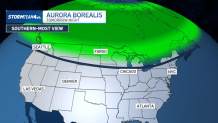2024-10-11 10:10:02
A coronal mass ejection (CME) erupted from the sun Tuesday and is projected to arrive at Earth sometime on Thursday.
CMEs trigger geomagnetic storms which, if they are strong enough, can produce brighter and more active displays of the northern lights that can be seen further south from the pole and even, in cases like this one, as far south as the United States.
This means that the aurora might be visible for many northern states and some of the lower Midwest to Oregon over the next few nights.
Exactly how far south the aurora can be seen depends on the intensity of the storm. Thursday’s storm is not expected to reach the same strength we saw back in May, where people all along the East Coast were reportedly seeing the lights. But it could be enough to make the aurora visible to the northern half of our area.
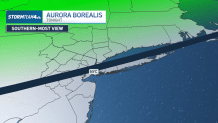
And sky conditions are going to be near perfect for viewing. Thanks to a dominant high-pressure system and an influx of dry air, clouds will not obstruct. Expect clear skies across the region.
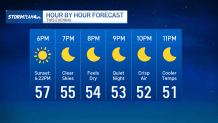
The moon should not be too intrusive, either. As the brightest object in the night sky, the moon serves as its own form of light pollution. When trying to view the sky, a new moon is ideal while a full moon can be a hindrance.
Thursday has neither of these. Instead, the moon will be in its first quarter phase, meaning there will be some unavoidable light, but nothing too detrimental.
Otherwise, the best way to increase your chances of seeing the lights is to head further north and find a spot with no light pollution and an unobstructed view of the northern sky. If you can, bring your best camera along with you. Even if you can’t see the aurora with the naked eye, many cameras are still capable of capturing the phenomenon.
But before you grab your camera and head upstate, make sure you also grab a jacket, if not the hat and gloves as well. Thursday night is forecast to be the chilliest night our area has seen since April.
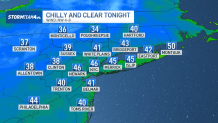
We’ll stay in the 40s in the city and across Long Island, but north and west of town, where you would have a better chance of seeing the northern lights, temperatures are dipping into the mid and lower 30s.
In fact, the National Weather Service has issued a frost advisory for much of that area. So if you plan on being out, you’re going to want to make sure you’re bundled up before you start to look up.
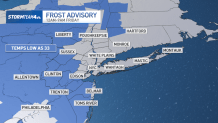
Then by Friday night chances of seeing the aurora in our immediate area will be gone. You would have to go much further upstate, or even into Canada, to try to glimpse the northern lights this time around.
